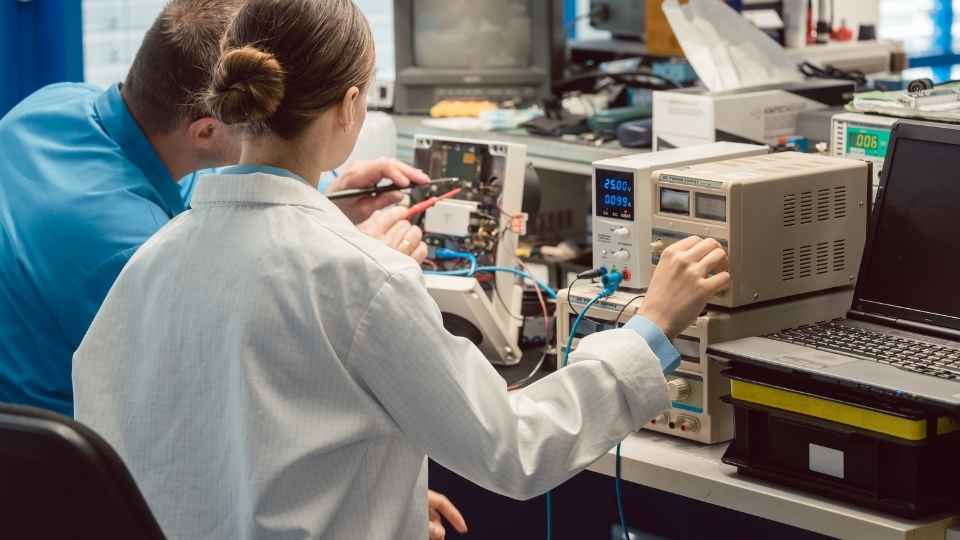
With the rapid advancements in medical technology, the role of biomedical electronics specialists has become increasingly vital in transforming patient care. According to recent statistics, medical devices have revolutionized the healthcare industry by enhancing patient monitoring, improving diagnostic accuracy, and enabling precision healthcare through bioinstrumentation.
In this article, we will explore how these innovative medical devices are reshaping patient care and delve into the future impact they hold. Join us as we uncover the fascinating world of biomedical electronics and its transformative effects on the well-being of patients worldwide.
Key Takeaways
- Medical devices have greatly enhanced patient care by improving patient monitoring, diagnostic accuracy, and enabling precision healthcare through bioinstrumentation.
- Advancements in biomedical electronics have revolutionized patient monitoring by providing continuous monitoring of vital signs and important parameters, empowering patients to proactively monitor their health and enabling personalized care based on individual needs.
- Diagnostic equipment plays a crucial role in improving patient outcomes by providing accurate and timely information for medical professionals to make informed decisions, revolutionizing healthcare by providing faster and more accurate diagnoses.
- Medical imaging technology enables accurate and non-invasive diagnosis of various medical conditions, allowing for early detection, precise diagnoses, and personalized treatment plans, ultimately improving the quality of healthcare and patient outcomes.
The Evolution of Medical Devices in Patient Care
The evolution of medical devices has significantly transformed patient care, revolutionizing the way healthcare professionals diagnose and treat various medical conditions.
Advancements in technology have led to the development of highly sophisticated medical devices that can accurately monitor vital signs, detect diseases at an early stage, and deliver targeted treatments. These devices have improved patient outcomes by providing real-time data and allowing for more precise diagnoses.
Furthermore, the miniaturization of these devices has made them more portable and wearable, enabling patients to receive continuous monitoring outside of traditional healthcare settings. This freedom allows patients to maintain their daily routines while still receiving necessary medical attention.
Overall, the evolution of medical devices has empowered both patients and healthcare professionals with new tools and capabilities to enhance patient care and improve quality of life.
Advancements in Biomedical Electronics for Enhanced Patient Monitoring
Advancements in the field of biomedical engineering have revolutionized patient monitoring, providing enhanced capabilities to track and analyze critical health data. Biomedical electronics has played a vital role in this transformation by developing innovative medical devices that improve patient care.
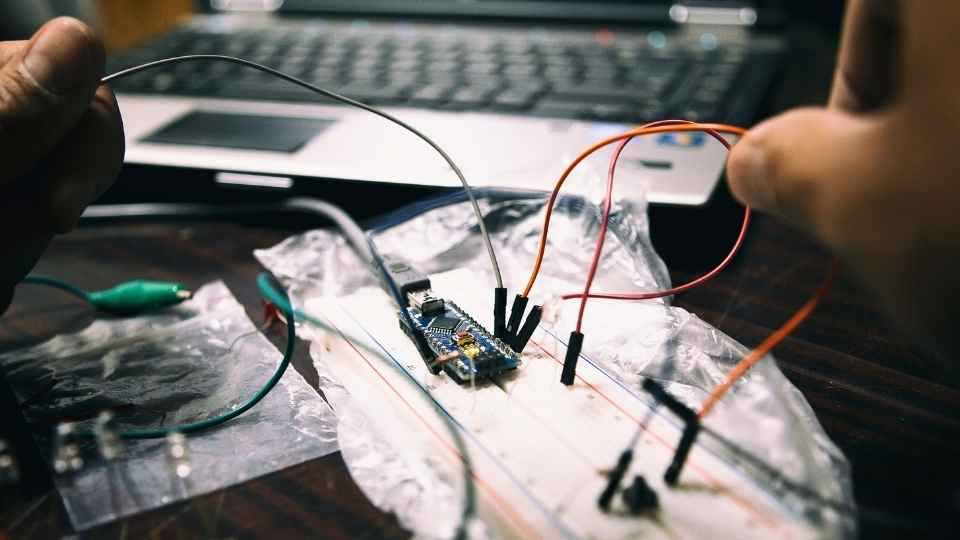
These advancements include wearable sensors, remote monitoring systems, and implantable devices that enable continuous monitoring of patients' vital signs and other important parameters. These devices are equipped with state-of-the-art sensors and wireless communication technologies, allowing healthcare professionals to remotely access real-time data and make informed decisions about patient care.
Moreover, sophisticated algorithms and machine learning techniques are applied to analyze the collected data and provide accurate predictions for early detection of any abnormalities or potential health risks. By leveraging these advanced technologies, biomedical electronics is empowering patients with freedom to monitor their health proactively while enabling healthcare providers to deliver personalized care based on individual needs.
This seamless integration of technology into patient care has significantly improved outcomes by facilitating early diagnosis, timely intervention, and personalized treatment plans.
The next section will explore the pivotal role of diagnostic equipment in further enhancing patient outcomes through precise disease identification and effective treatment strategies.
The Role of Diagnostic Equipment in Improving Patient Outcomes
Diagnostic equipment plays a crucial role in improving patient outcomes by providing accurate and timely information for medical professionals to make informed decisions.
These advanced tools, such as imaging machines, laboratory analyzers, and genetic sequencing devices, enable healthcare providers to detect diseases earlier, accurately diagnose conditions, and monitor treatment progress.
Diagnostic Equipment Advancements
With the increasing integration of cutting-edge technology, medical devices for diagnostics have greatly enhanced patient care. These advancements in diagnostic equipment have revolutionized healthcare by providing faster and more accurate diagnoses, leading to improved treatment outcomes.
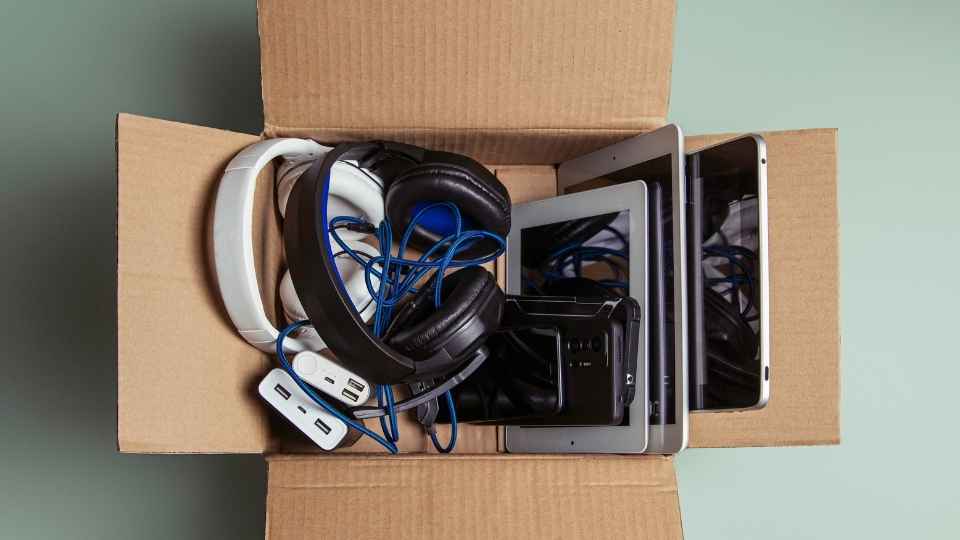
Here are three notable advancements in diagnostic equipment:
Portable Ultrasound Devices: These handheld devices allow healthcare professionals to perform ultrasounds at the patient's bedside, eliminating the need for patients to be transported to imaging departments. This not only saves time but also reduces the risk of complications associated with patient transportation.
Point-of-Care Testing Devices: These compact devices enable rapid onsite testing for various diseases and conditions, such as diabetes, infections, and cardiac markers. Results can be obtained within minutes, allowing for immediate treatment decisions.
Wearable Diagnostic Devices: These small wearable devices continuously monitor vital signs like heart rate, blood pressure, and oxygen levels. They provide real-time data that helps detect any abnormalities or changes in a patient's health status.
These technological advancements have significantly improved the efficiency and accuracy of medical diagnostics while enhancing patient comfort and convenience.
Impact on Patient Outcomes
The integration of cutting-edge technology in healthcare has resulted in significant improvements in patient outcomes. Medical devices, such as diagnostic equipment, have played a crucial role in this transformation. These devices utilize advanced technologies to diagnose diseases and conditions accurately and efficiently, leading to early interventions and better treatment plans. By providing physicians with precise data and images, medical devices enable them to make informed decisions for personalized patient care.
Moreover, these devices have revolutionized the monitoring and management of chronic conditions. Patients can now use wearable devices that continuously track vital signs, allowing healthcare professionals to remotely monitor their health status. This real-time data enables timely interventions and adjustments in treatment plans, enhancing patient outcomes and reducing hospital readmissions.
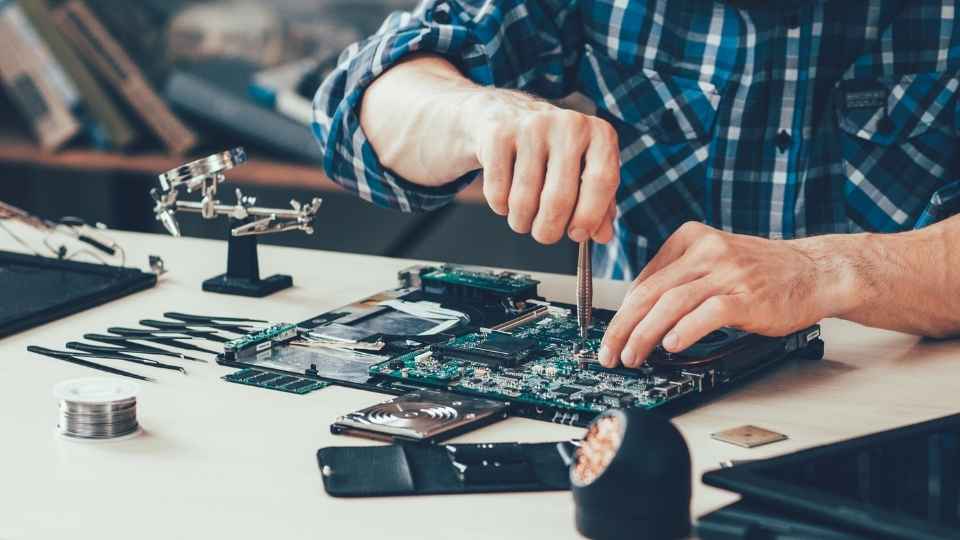
Additionally, medical devices have simplified surgical procedures by enabling minimally invasive techniques. Advanced imaging systems guide surgeons during operations, increasing precision while minimizing trauma to surrounding tissues. This results in faster recovery times for patients.
Overall, the integration of medical devices has had a profound impact on patient outcomes by facilitating accurate diagnoses, improved disease management, and enhanced surgical procedures. As technology continues to advance at a rapid pace, the potential for further advancements is boundless in transforming patient care for the better.
Revolutionizing Patient Care Through Medical Imaging Technology
Medical imaging technology is playing a pivotal role in revolutionizing patient care by enabling accurate and non-invasive diagnosis of various medical conditions. The advancements in this field have greatly improved the quality of healthcare and patient outcomes. Here are three ways medical imaging technology is transforming patient care:
Early Detection: Medical imaging allows for the early detection of diseases, such as cancer or cardiovascular conditions, before symptoms become severe. This enables timely intervention and increases the chances of successful treatment.
Precision Diagnosis: With high-resolution images produced by medical imaging devices like MRI, CT scans, and ultrasound, healthcare professionals can make more precise diagnoses. This leads to personalized treatment plans that target specific areas or abnormalities within the body.
Minimally Invasive Procedures: Medical imaging techniques like fluoroscopy and endoscopy guide minimally invasive procedures, reducing the need for traditional open surgeries. These procedures result in less pain, shorter recovery times, and fewer complications for patients.
These advancements in medical imaging technology pave the way for further innovations in bioinstrumentation for precision healthcare.
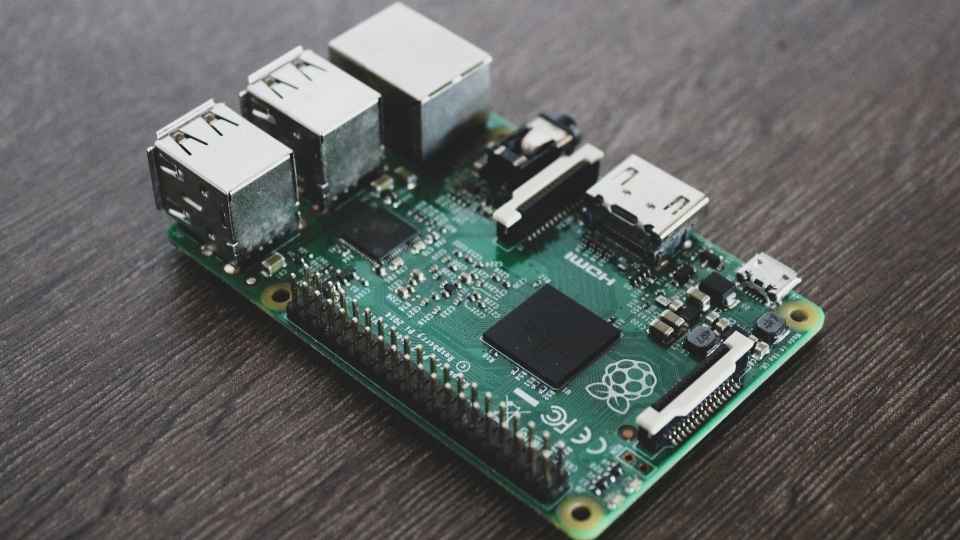
Transition into Next Section:
As medical imaging continues to evolve and improve patient care, innovations in bioinstrumentation are also contributing to revolutionizing precision healthcare even further.
Innovations in Bioinstrumentation for Precision Healthcare
Innovations in bioinstrumentation are driving significant advancements in precision healthcare, enhancing diagnostic accuracy and treatment efficacy. Bioinstrumentation refers to the use of electronic devices and technologies in biological and medical applications. These innovations have revolutionized patient care by enabling real-time monitoring and analysis of vital signs, biomarkers, and physiological parameters.
Advanced biosensors, wearable devices, and implantable sensors have made it possible to collect continuous data from patients, providing valuable insights into their health status. This data can be analyzed using artificial intelligence algorithms to detect early signs of diseases or predict treatment outcomes with high accuracy.
Furthermore, the integration of bioinstrumentation with telemedicine platforms allows for remote patient monitoring and personalized healthcare delivery without geographical limitations.
Overall, these advancements in bioinstrumentation are empowering both patients and healthcare professionals with the freedom to make informed decisions about their health while ensuring optimal care outcomes.
The Future Impact of Medical Devices on Patient Care
Advancements in bioinstrumentation are poised to revolutionize patient care by enhancing treatment outcomes and enabling personalized healthcare delivery. Medical devices have the potential to greatly impact the way healthcare is delivered, allowing for more precise diagnostics, targeted therapies, and improved patient monitoring.
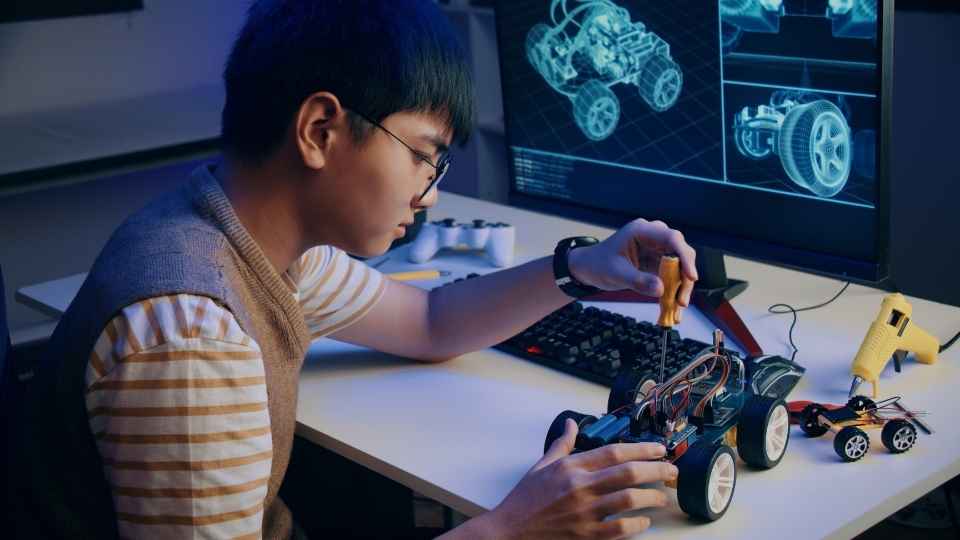
Here are three ways that medical devices are transforming patient care:
Precision Medicine: Medical devices can collect real-time data on a patient's health status, allowing for personalized treatment plans tailored to their specific needs. This approach ensures that patients receive the most effective interventions based on their unique characteristics.
Remote Patient Monitoring: With wearable sensors and remote monitoring devices, healthcare professionals can closely monitor patients' health even when they are not physically present in a clinical setting. This enables early detection of complications or changes in health status, leading to timely interventions and improved outcomes.
Minimally Invasive Procedures: Advanced medical devices have made it possible to perform complex procedures using minimally invasive techniques. This reduces the risk of complications, shortens recovery time, and improves overall patient experience.
As technology continues to advance, medical devices will play an increasingly significant role in delivering high-quality, personalized care to patients worldwide.
Frequently Asked Questions
What Are Some of the Challenges Faced by Biomedical Electronics Specialists in Implementing Medical Devices in Patient Care?
Some challenges faced by biomedical electronics specialists in implementing medical devices in patient care include ensuring device compatibility, addressing cybersecurity concerns, training healthcare professionals, and managing the integration of new technology into existing systems.
How Do Medical Devices Improve Patient Outcomes and Contribute to the Overall Healthcare System?
Medical devices play a critical role in improving patient outcomes and contributing to the overall healthcare system. Through advanced technology and precise functionality, these devices enhance diagnosis, treatment, and monitoring, ultimately revolutionizing patient care.
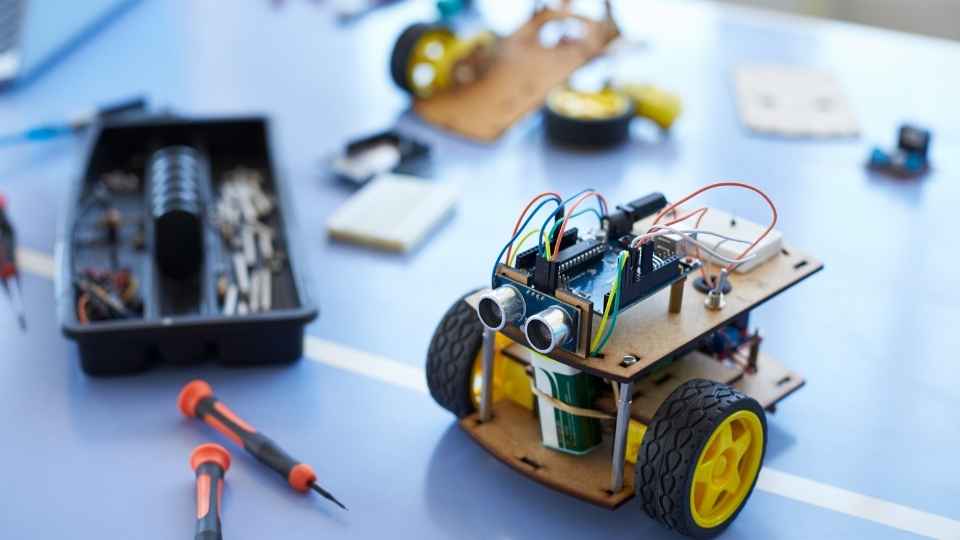
Are There Any Risks or Potential Adverse Effects Associated With the Use of Medical Devices in Patient Care?
While medical devices have revolutionized patient care, it is important to consider the risks and potential adverse effects associated with their use. Vigilance in monitoring device safety and adherence to regulatory standards are crucial in mitigating these concerns.
How Do Advancements in Biomedical Electronics Technology Help in Personalized and Precision Healthcare?
Advancements in biomedical electronics technology play a crucial role in personalized and precision healthcare by enabling the development of sophisticated medical devices that can accurately diagnose, monitor, and treat patients based on their individual needs and characteristics.
The future of medical devices holds promising trends and developments that will further revolutionize patient care. These include advancements in telemedicine, wearable technology, artificial intelligence, robotics, and nanotechnology, all aimed at delivering more precise and personalized healthcare.
 Basic Electronics ConceptsEssential ToolsCircuit Design BasicsMicrocontrollersDIY Electronics ProjectsRoboticsPrivacy PolicyTerms And Conditions
Basic Electronics ConceptsEssential ToolsCircuit Design BasicsMicrocontrollersDIY Electronics ProjectsRoboticsPrivacy PolicyTerms And Conditions
